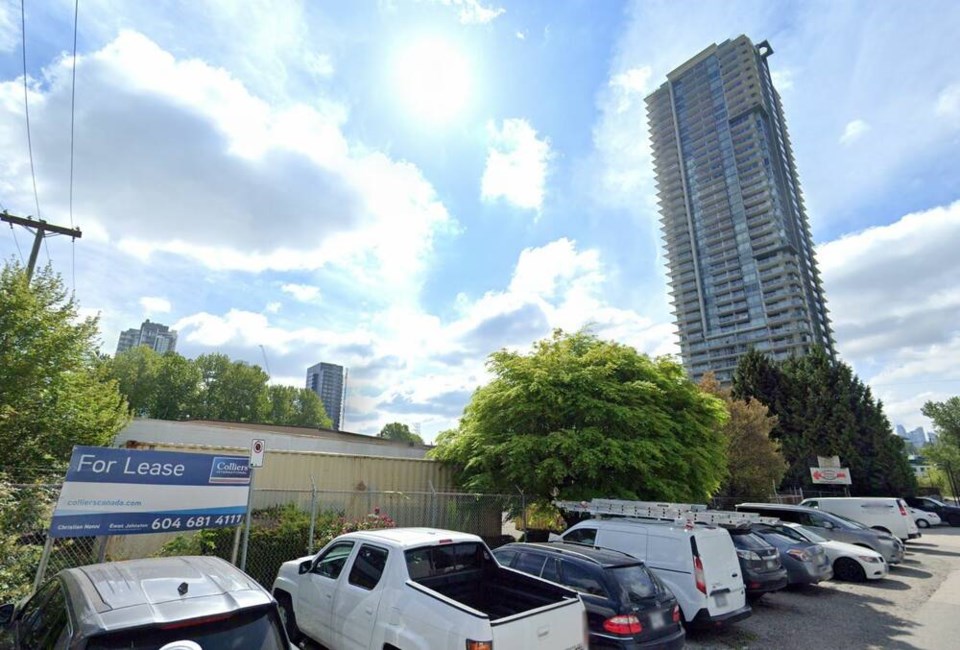Neighbours of a proposed Brentwood development in Burnaby are worried the massive project could cause flooding and settling.
The four-tower Emerald Place development at 2300 Madison Ave., developed by Polygon Homes, includes plans for about 1,460 new homes and five to six levels of underground parking with 1,466 parking spots.
But the strata council of the condo next door wants a guarantee the construction would not lead to ground settling or flooding.
At a public hearing on May 30, Fulton House strata council member Sophia Quiring spoke on behalf of residents at 2388 Madison Ave.
Quiring said her neighbours have concerns about flooding in the neighbourhood, especially near the 64-storey development Gilmore Place.
“We have Gilmore Place with significant settling and so many problems happening. I would say that, generally, we’re feeling very uneasy around things like – just the settling, the foundation, the ground shifting, the soil,” Quiring told council.
“We already have problems with water in the area; we have to watch it very carefully. The elevator shaft in Fulton House fills up, and we’ve got the sump pumps going. Like, it’s already an issue in our area.”
The City of Burnaby is currently suing Gilmore Place developer Onni Group, as well as its architect, structural engineers and geotechnical consultant, for “cracking and deformation” of city sidewalks and streets allegedly caused by the Gilmore Place excavation and pile driving.
“I’m wondering what kind of assurances we can have from the city and from Polygon that our property is not going to suffer what’s happened across the street from Gilmore Place,” Quiring asked.
“Because once that happens, it happens. It’s done.”
Ed Kozak, the city’s general manager of planning and development, said the city’s role is to ensure the developer follows through on the consulting engineers’ recommendations.
“That’s the assurance that we can provide you,” Kozak said, noting the “liability ultimately lies with the consulting engineer and the developer.”
Polygon’s vice-president of development, Brian Ellis, said the company has experience developing in the neighbourhood, as it developed Fulton House next door to the Emerald Place site.
He said Polygon’s plan for Emerald Place is to use the same geotechnical strategy it used with Fulton House: a “cut-off wall system” of so called “secant walls,” which manage water flow through the area.
Ellis noted the company has received geotechnical and hydrogeological reports with strategies it needs to follow.
But Coun. Alison Gu asked if the city could discuss digging less deeply than five or six levels for underground parking to “proactively mitigate” affecting the water table.
“My understanding is that once you impact the water table, that’s it,” Gu said, adding, “I don’t think residents really want to be dragged into legal battles, and I don’t think the (developer) wants to do that either.”
Kozak said the city requires the developer not to draw down the water table during or after construction and the developer must demonstrate that before they can get a building permit.
“How do you demonstrate that if you’re not in control of the physics?” Gu asked.
“Modelling,” said Kozak.
“But modelling didn’t work at Onni,” Gu replied.
But questioning that isn’t the city’s job, according to Kozak.
“I’m not a hydrological engineer; we have to take their advice, their stamps and how they get to their recommendations and conclusions. In terms of the methodology they use, I’m not qualified to question that,” he said.





